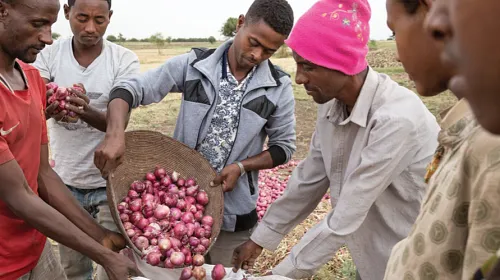You don’t break the cycle of poverty by giving people money. You break it by giving them power. This has been CARE’s mission from the start – to give people the ability to take control of their futures, and not let it be dictated by assistance.
Every success story reinforces this mission. That’s why we’re publishing a series of success stories from CARE Ethiopia’s GRAD Program (Graduation with Resilience to Achieve Sustainable Development), a microfinancing program funded by USAID wherein communities set up Village Economic and Social Associations for its members (VESAs).
VESAs give members of the community a chance to buy into a savings and loan program, from which they can pull small, targeted loans to start new businesses and enterprises. It has been a wild success. Members are trained in financial management, adaptation to climate change, promotes behavioral changes in husbands and men, nutritious meals for children and there is an almost 100% repayment rate. Most importantly, it shows women that when the power is in their hands, great things can happen, and entire communities can prosper.
The program shows that when you give someone not assistance, but opportunity, just how far they will run with it.
A COMMUNITY OF OPPORTUNITIES
Over the last three years, Mola Hagos has used the lessons he learned through GRAD to build a better life for his family. Today he is using these same lessons to help the young people in his community find a brighter future at home.
Migrating to look for work is one of the biggest problems young people in this area face. The Djibouti border is not far away. Many believe that economic opportunity lies in crossing that border and making their way to Saudi Arabia or Yemen to work. Most go illegally—both boys and girls—and this puts them in great danger. Many are held for ransom by trackers, and girls may be raped or live like prisoners in the houses where they work. A large number have returned injured, and some have even lost their lives.
They go because they don’t see any alternative. But through my example, I am showing them that there are economic opportunities to be found right here in our community.
I only attended school up to grade 10. Both of my parents were old, so they couldn’t earn enough to support the family. I was the oldest child, so everybody depended on me.
Three years ago I started participating in the GRAD project. The knowledge and skills I gained helped me to change our lives. I learned how to save and manage money, and I started taking loans. I used that money to buy, fatten, and sell sheep and eventually invested the profit in growing onions in our newly irrigated farmland. The first harvest brought in a net profit of 20,000 birr (US $903), and the second, 25,000 birr (USD $1,130). I used what I earned to buy two oxen, to build my family a nice, new home, and to keep my siblings in school.
Previously, young people felt that the doors were closed to us, that there were no opportunities to progress or improve our lives. But now, we see that change is possible. As a result of what I have done, the young people in my community elected me to lead the local Youth Association. I am keen to continue sharing with them what I got from the project—the knowledge, skills, and vision—so that they, too, can access the opportunities that are available right here in our own community.

